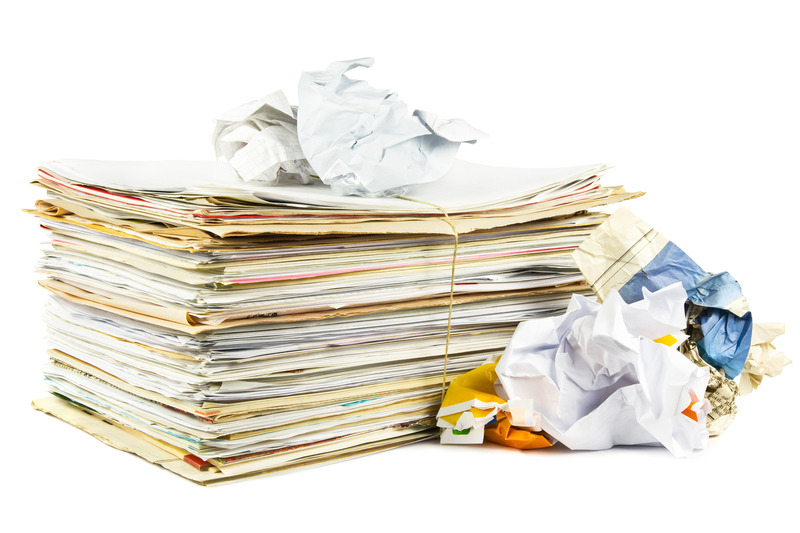The Best Practices for Responsible PPE Waste Disposal
The widespread use of Personal Protective Equipment (PPE) has become an essential part of ensuring safety across countless industries and communities worldwide. However, the surge in PPE usage, particularly following the global COVID-19 pandemic, has given rise to an equally pressing concern: responsible PPE waste disposal. Improper disposal of face masks, gloves, gowns, and other protective gear is not only hazardous to the environment but can also pose significant health and ethical risks. In this comprehensive article, we explore best practices, actionable steps, and strategies for eco-friendly and responsible PPE waste management.
Why Is Proper PPE Waste Disposal Crucial?
Personal Protective Equipment waste has unique disposal challenges. Many PPE items are made from non-biodegradable materials like plastics and synthetic fibers, which means they persist in the environment for decades or even centuries. Mismanaged PPE waste disposal can lead to environmental pollution, contribute to the spread of diseases, and harm wildlife.
- Environmental Impact: Discarded masks and gloves often end up in landfills, rivers, and oceans, breaking down into microplastics that adversely affect aquatic life.
- Health Hazards: Used PPE may carry pathogens, posing infection risks to sanitation workers, wastepickers, and the public.
- Reputational Risks: Businesses and organizations failing to manage PPE waste responsibly may face community backlash and legal penalties.
By prioritizing responsible PPE waste management, we can protect both people and the planet. Let's examine how.

Understanding Different Types of PPE Waste
To build an effective disposal strategy, it is crucial to differentiate between types of PPE waste. Each category has its own best practices for safe and responsible disposal:
- Single-use PPE: Includes disposable masks, gloves, gowns, and face shields.
- Reusable PPE: Items like washable masks, durable face shields, and protective eyewear.
- Clinical or Biomedical PPE Waste: PPE contaminated with biological materials, especially from healthcare settings.
- Industrial PPE: Special equipment used in industry that might contain hazardous substances.
Best Practices for Responsible PPE Waste Disposal
1. Segregation at Source
Segregation is the first and most critical step in managing PPE waste responsibly. Properly separating PPE waste from general waste minimizes contamination and makes subsequent processing more efficient.
- Use color-coded, clearly labeled bins specifically for PPE waste.
- Educate staff and the public on what counts as PPE waste.
- Keep PPE waste bins at strategic locations, such as entrances and exits of buildings.
2. Use of Appropriate Waste Containers
PPE waste, especially from medical settings, must be stored in suitable containers to prevent leaks, spills, or accidental exposure. Use leak-proof, puncture-resistant containers with lids, and ensure regular collection to avoid overflow.
- Red or yellow bags/containers are often used for biohazardous PPE waste.
- General-use PPE waste (like masks from public use) can be collected in separate bins, sealed, and marked clearly.
3. Worker Safety and Training
Anyone involved in handling, transporting, or disposing of PPE waste should receive adequate training. This reduces accidents and limits the spread of infectious diseases.
- Train on correct usage of PPE and proper waste handling protocols.
- Emphasize hand hygiene and ensure availability of sanitizer or hand-washing stations.
- Equip waste handlers with extra protective equipment as needed.
4. Compliance With Local and National Regulations
Regulations governing the disposal of PPE waste vary by region and country. Ensuring compliance is essential to avoid penalties and to maintain safe waste management standards.
- Familiarize yourself with the rules from local health and environmental authorities.
- Keep updated with changes in guidelines, especially during public health emergencies.
- Work with licensed waste disposal contractors when necessary.
5. Promotion of Reusable PPE Where Possible
Switching to reusable PPE can vastly reduce the total volume of waste generated. Many protective items can be safely sanitized and reused, decreasing environmental impact.
- Select PPE products designed for multiple uses and easy cleaning.
- Deploy clear protocols for sanitizing and checking the integrity of reusable items.
- Educate users on proper care to ensure compliance and effectiveness.
6. Safe Transportation and Storage of PPE Waste
PPE waste should be stored in a secure manner until it can be collected or treated. Transportation must follow strict safety protocols to prevent leaks or accidental exposure.
- Store waste in designated, locked storage areas away from public access.
- Transport PPE waste using authorized vehicles designed to handle hazardous waste.
- Document and track waste movement from source to final disposal.
7. Environmentally Responsible Disposal Methods
Disposal of PPE waste should prioritize methods that mitigate environmental impact. Some eco-friendly disposal options include:
- Incineration: Used for high-risk clinical PPE waste, incineration destroys pathogens and reduces volume but must be performed in environmentally compliant facilities to minimize emissions.
- Autoclaving: Used PPE is subjected to high-pressure, high-temperature steam to neutralize infectious agents before it is sent for landfill or recycling.
- Recycling Programs: Some manufacturers and organizations run specialized recycling programs for PPE like masks and gloves. These processes recover materials for reuse in other products (e.g., construction, furniture).
- Landfilling: As a last resort, non-contaminated PPE waste can be sent to sanitary landfills, but efforts should be made to ensure it does not blow away or end up in waterways.
Reducing PPE Waste Generation
The most environmentally friendly approach is to reduce the volume of waste at its source. Here are practical steps to minimize PPE waste:
- Adopt reusable PPE wherever safe and effective.
- Optimize inventory to avoid unnecessary overstock and waste.
- Encourage proper use of PPE so that items are not used or thrown away prematurely.
- Raise awareness about environmental impacts among staff and the public.
Innovative Solutions and Technologies for PPE Waste Management
As the scale of PPE waste grows, so does the need for innovative approaches to responsible PPE waste disposal. Consider these emerging solutions:
Advanced Recycling Technologies
Some companies have developed methods to recycle PPE into new products. Technologies such as pyrolysis and chemical recycling break down synthetic fibers in masks and gloves, converting them into reusable materials.
Take-Back and Collection Programs
Manufacturers and local governments are launching PPE take-back schemes, placing dedicated bins in public places and supplying boxes for large institutions to collect used items for specialized recycling.
Eco-design and Biodegradable PPE
The future of responsible PPE waste management may lie in products made from biodegradable or compostable materials. Research is ongoing into developing single-use PPE that will safely break down after disposal.
Community Engagement and Education
No PPE waste management program can succeed without the cooperation of the public, staff, and stakeholders. Invest effort in education and engagement:
- Display clear, visual signage near waste bins to guide responsible disposal.
- Host training sessions, webinars, and informational campaigns on PPE waste issues and best practices.
- Involve community groups and environmental organizations in collection and clean-up activities.
Legal and Ethical Implications of Improper PPE Waste Disposal
Improper PPE disposal can incur severe legal consequences, especially in health, food, and service industries. Occupational safety and environmental laws in many jurisdictions require strict adherence to waste handling protocols. Beyond legal risks, there is an ethical obligation to protect vulnerable individuals and the ecosystem from hazardous waste.
Summary: Prioritizing Sustainable PPE Waste Solutions
Responsible PPE waste disposal is a shared responsibility. As we continue to rely on Personal Protective Equipment for safety and health, we must be equally attentive to how we manage associated waste. Embracing best practices--such as segregation at source, use of appropriate containers, regular training, regulatory compliance, and support for innovative disposal methods--can greatly reduce the environmental footprint of PPE.
By committing to eco-conscious PPE waste disposal, investing in community education, and advocating for better product design, organizations and individuals can play a pivotal role in safeguarding public health and the planet. With collective action and forward-thinking waste management strategies, we can ensure that safety today does not come at the expense of tomorrow's environment.

Frequently Asked Questions About PPE Waste Disposal
- What is the safest way to dispose of used PPE at home?
Place used masks and gloves in a sealed plastic bag, tie it securely, and dispose of it with household waste. Wash your hands thoroughly afterwards. - Can PPE like disposable masks be recycled?
Most curbside recycling programs do not accept PPE, but specialized recycling schemes may exist--check with local authorities for suitable options. - Is burning PPE waste at home safe?
No, at-home incineration is not recommended due to the risk of toxic fumes; use authorized waste facilities.
Conclusion
The effective and sustainable disposal of Personal Protective Equipment is essential for protecting public health, preventing pollution, and fulfilling our ethical duties as global citizens. Adopt the best practices outlined above for responsible PPE waste disposal to foster a safer, cleaner, and more sustainable world.